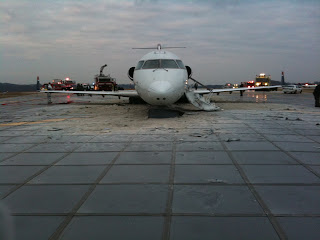by B .N. Sullivan

Yesterday, United Airlines flight attendants braved the winter cold to demonstrate at 17 airports across the United States, Europe and Asia to protest their employer's "failure to negotiate a new contract on time." In accordance with the existing contract between United and the Association of Flight Attendants (AFA), negotiations began on April 6, 2009, with the intention of getting a new collective bargaining agreement in place as soon as possible. According to the AFA leadership, "United has shown no interest in discussing improvements or reaching a new contract unless we agree to concessionary demands."
Greg Davidowitch, president of the AFA Master Executive Council at United Airlines said, "Flight attendants are angry because management seems only interested in delaying a new contract, refusing to discuss any improvements."
The existing labor contract, which became amendable on January 7, 2010, was negotiated while the airline was in bankruptcy. The flight attendants took cuts in pay and health care benefits; their work rules were revised; and their pensions were terminated.
"For too long this management has expected flight attendants to work harder for less. No more!" stated Davidowitch. "This is just the first of our public protests. Flight attendants vow to do 'Whatever It Takes' to get the contract we have earned."
United Airlines flight attendants picketed at airports in Atlanta, Boston, Charlotte, Chicago, Denver, Frankfurt, Hong Kong, Honolulu, Las Vegas, London, Los Angeles, Miami, New York, San Francisco, Seattle, Tokyo-Narita and Washington, DC. They were joined by flight attendants from other airlines in a show of solidarity.
Click here to view a copy of the leaflet handed out to passengers during the demonstration:
United's Running Late... With My Pay!
[Photo Source]
 Looks like ASA (Atlantic Southeast Airlines) is hiring flight attendants. ASA is a regional airline in the United States that provides service under contract to Delta Air Lines (as Delta Connection) and United Airlines (as United Express).
Looks like ASA (Atlantic Southeast Airlines) is hiring flight attendants. ASA is a regional airline in the United States that provides service under contract to Delta Air Lines (as Delta Connection) and United Airlines (as United Express).















